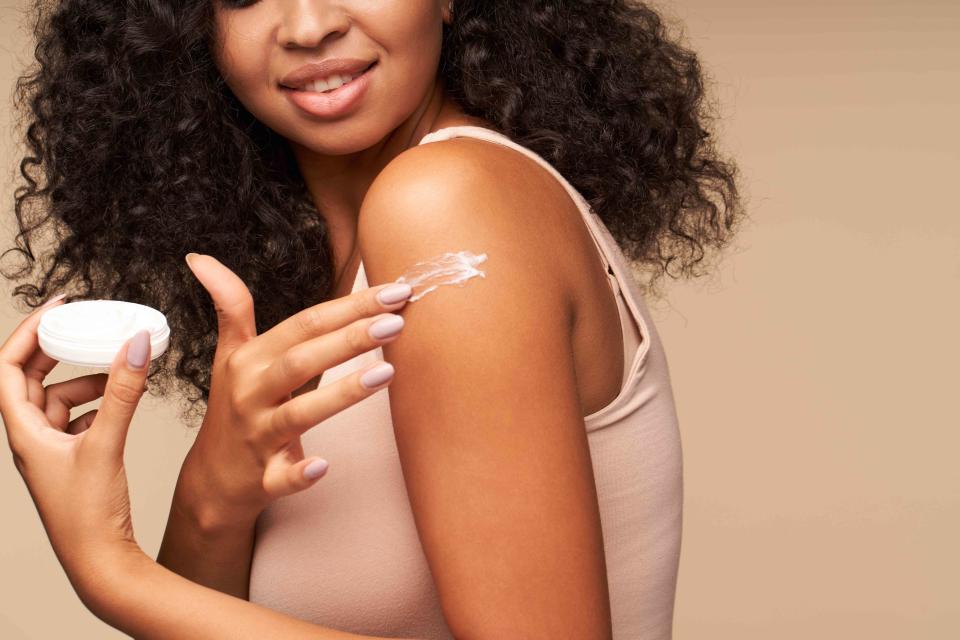What’s the Difference Between Prebiotic and Probiotic Skincare?
Experts break down everything you need to know.

Getty Images
Something that we’ve all been paying more attention to when it comes to skincare is our microbiome, the environment on our skin that balances all the present bacteria and fungi — an essential part of maintaining a healthy complexion.
“Balancing the microbiome in the gut and the skin can have benefits for overall health and promote more healthy skin,” says Dr. Arianne Shadi Kourosh an assistant professor at Harvard Medical School and Board-Certified Dermatologist at Sadick Dermatology Group. “It can be especially helpful for those prone to inflammatory skin conditions like acne, eczema or psoriasis.”
The best way to keep all of that in check is with prebiotic and probiotic skincare. But these buzzwords are more than just trends; and don’t just take our word for it.
To get a better idea of the benefits, differences, and how to decide which one you should be using, we turned to the experts. Along with Dr. Kourosh, we also spoke with Board-Certified Dermatologist at MDCS Dermatology Dr. Marisa Garshick, to get expert insights on prebiotics and probiotics.
See what they each had to say below.
:
What are prebiotics?
According to Dr. Kourosh, prebiotics are ingredients that are used by the good bacteria in our gut and skin. Dr. Garshick adds prebitoics not only feed that good bacteria, but they also support and stimulate good bacteria’s growth and activity in our bodies. Prebiotics can be found in foods (such as bananas and certain grains like barley, onions, garlic, and ginseng), supplements, and topical products.
When it comes to skincare, she says that prebiotics can be incorporated into all sorts of topical products (cleansers, serums, moisturizers, sunscreens, etc.) and formulations. Their main purpose in this context is to support the skin barrier. She explains that the skin’s microbiome must be balanced; any disruption to the microbiome weakens the skin barrier and can lead to irritation, redness, dryness, and sensitivity — or exacerbate certain skin conditions (like eczema and acne). By keeping the good bacteria in our skin’s microbiome nourished and supported, you keep your skin hydrated and healthy.
Some of Dr. Garshick’s favorite prebitoic skincare products include Vichy’s Mineral 89 Prebiotic Recovery and Defense Concentrate, La Roche Posay Toleriane Double Repair Moisturizer, Aveeno’s Prebiotic Oat Body Wash, and Bliss Pre/Post Biotics Barrier Aid Cleansing Balm.
What are probiotics?
Probiotics, on the otherhand, are live bacteria. Dr. Kourosh says that they are the good bacteria that balanaces the microbiome in our gut and skin and provide plenty of health benefits.
They can be found in foods, such as yogurt and sauerkraut, and in skincare. When probiotics are ingested, Dr. Garshick says that they keep the balance of good organisms and bad organisms in check. Dr. Kourosh says that the easiest way to incorporate probiotics into a regimen is through food or supplement. Just be sure to consult with your doctor when choosing the right probiotic supplement for you. She says that there is a range of quality in supplements and some may not live up to the claims on their labels.
In terms of skincare, Dr. Garshick says that applying probiotics topically may help with inflammation, protect against free radical damage, provide hydration, and fight off harmful bacteria. She explains that shifts in the microbiome play a role in various skin conditions, such as eczema, acne, and rosacea, and probiotics may help to support the skin barrier and prevent flare ups. Other benefits include lowering the pH levels of skin, which she says is helpful when wanting to reduce the signs of aging skin. Some probiotic-containing products that she particularly likes include the Biossance Squalane + Probiotic Gel Moisturizer and the Eminence Organic Skin Care Clear Skin Probiotic Moisturizer.
But while probiotics can be used topically in skincare, and there's initial research proving their benefits addressing skin concerns, Dr. Garshick says that more research is needed to better understand the role of probiotics on the skin.
Dr. Kourosh adds that incorporating probiotics into products can be tricky because it is live bacteria that requires refrigeration and preservatives to survive, which means they may not last as long as other products. Plus, as you should always do whenever you’re introducing a new ingredient or product in your routine, consult with a dermatologist to see if probiotics are for you.
Which one should you use?
The truth is — because both work to keep the microbiome healthy — one isn’t necessarily better than the other. In fact, you can benefit greatly from using one or both of them in your skincare regimen.
“Both [prebiotics and probiotics] can be especially helpful for those with dry or sensitive skin, acne, rosacea, eczema, or other skin conditions that may be dependent on a healthy [and] intact skin barrier,” says Dr. Garshick. “Because they can help to reduce inflammation, both prebiotics and probiotics can help to address signs of redness. It can also be helpful for those dealing with signs of skin aging, as it is especially important to maintain the skin barrier as we age.”
For more InStyle news, make sure to sign up for our newsletter!
Read the original article on InStyle.

